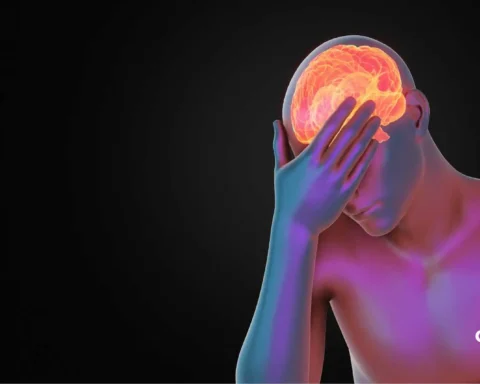Parkinson’s disease is a disorder of the brain which causes uncontrollable and unintentional movements. The prevalence of such neurodegenerative diseases is gradually increasing, with research suggesting that 139 million people will be diagnosed with dementia by 2050. Due to the adverse effects that come with the disease, many studies are constantly conducted to find relief for the debilitating symptoms, if not a cure.
One such technique, known as light therapy for Parkinson’s, has been influential in managing both motor and non-motor symptoms of Parkinson’s patients alongside active treatment to make their daily living slightly better.
Table of Contents
Light Therapy for Parkinson’s
Laser Light therapy is commonly used as a complementary element in treatments for patients with pain, inflammation, and decreased tissue repair and it is known to have strong neuroprotective effects.
What is Light Therapy?
Particular wavelengths of bright light are utilized that can noninvasively penetrate through the skin and tissues. The science behind it suggests that light may boost dopamine release, which can substantially improve Parkinson’s symptoms. Moreover, near-infrared light is absorbed in the mitochondria of the cell. This process amplifies energy generation and balances cell functions, which is thought to improve mitochondrial function, which is a major factor in the development of Parkinson’s disease. Most importantly, light is a primary factor in controlling the body’s circadian rhythms. Abnormalities of circadian function are gradually being strongly established as non-motor symptoms of Parkinson’s disease.
While light therapy is centred around the treatment via the gut or abdomen, current studies suggest a potential association between the gut and the brain. This research is paramount to Parkinson’s disease patients since previous studies have observed gut issues as being a common complaint prior to the onset of Parkinson’s disease.
YOU MIGHT BE INTERESTED IN: How to Live Well with Parkinson’s Disease with Vonita Singh
Which Wavelengths are Employed?
There are three primary wavelengths that are considered for the management of Parkinson-related symptoms:
1. Polychromatic light or white light, which is the full spectrum of light.
2. Near-infrared light, which has a wavelength range of 670-1300 nanometers.
3. Blue light, which has a wavelength range of 460-480 nanometers. This light is considered to be the most powerful light that can be used to manipulate the human body’s circadian rhythm.
Which Symptoms can Light Therapy Treat?
Numerous symptoms of Parkinson’s disease can be potentially reduced with light therapy treatment.
1. Sleep Disorders: One of the most commonly occurring non-motor symptoms of Parkinson’s disease is sleep disorders. They include nocturnal and diurnal manifestations, REM sleep behaviour disorders, and excessive sleepiness in the daytime. Light therapy is known to have many beneficial effects on sleep in patients by synchronizing the circadian rhythm.
2. Anxiety and Depressive Symptoms: Research suggests that more than half of the people diagnosed with Parkinson’s disease encounter depression and/or anxiety at some point throughout their disease duration. This is because Parkinson’s influences the pathways of the brain that generate serotonin (the chemical that balances mood, appetite, and sleep) – this influence triggers symptoms of anxiety and depression which can be treated with dopamine drug therapy.
3. Fatigue: Fatigue is also one of the most common symptoms experienced by more than half the patients. Fatigue is one of the most disabling symptoms of PD. While the exact cause is unknown, likely, the excess effort required to accomplish simple tasks such as taking a shower, picking a call, or tying shoelaces needs a large amount of energy, causing extreme tiredness. Fatigue is one of the earlier symptoms, appearing before most motor symptoms.
4. Motor Skills: The lack of sufficient dopamine and impairment of the substantia nigra results in the imbalance of motor skills in PD patients, resulting in tremors (parkinsonian tremors), stiffness, slowness, and improper coordination and balance – the hallmark symptoms of Parkinson’s disease. Motor symptoms usually come with or after facial symptoms, which involve a significant reduction in facial expressions.
Usually, studies that employ white light employ a lightbox or a screen as the treatment modality to deliver the light since white light is detectable by the eye. However, this is not so in the care of Near Infrared Light treatment. Therefore, delivery methods include wearing a helmet, intranasally, or via an implant in the brain.
The session length, how many days per week, and at what time are all dependent on the patient’s personal goals and requirements. However, the session length in previous studies has often had times ranging from half an hour to one and a half hours per day.
Clinical Studies on Light Therapy for Parkinson’s Disease
There have been several clinical studies conducted using animal models, such as transgenic mouse models, that have supported the use of light therapy for neurodegenerative disorders such as Parkinson’s disease. As of 2022, nine clinical trials have been conducted, out of which seven worked with white light, one explored blue light, and another one studied near-infrared light.
Besides previous studies, several current studies are further investigating light therapy for Parkinson’s. For example, the clinical trial for Near Infrared Endoventricular Illumination being conducted in France is posed as one of the pioneers in deep brain stimulation surgery. The trial is experimenting with a device implanted in the brain to emit near-infrared light.
Currently Available Light Therapy Devices
Since the effects of light delivered through the eyes and skin have minimal side effects, several light therapy devices have already been developed, advertised, and made available for purchase without FDA approval.
However, most of the red-light and white-light devices are commonly made and purchased for the treatment of depression, wrinkles, severe pain, healing wounds, improving sleep, and acne. Currently, there are no light therapy devices in the market made specifically for Parkinson’s disease patients.
LISTEN TO THIS PODCAST: Fighting the Stigma around Parkinson’s with Sanjeev Dixit
Conclusion
Light therapy for Parkinson’s disease is like a beacon of hope. While research is still in progress, the results from studies are strong and promising.
Light therapy is an effective and non-invasive technique to manage both motor and non-motor symptoms of Parkinson’s disease, easing symptoms such as sleep, anxiety, fatigue, and depression. Future studies are increasingly looking towards minimizing the impact of the disease on core motor functions such as Parkinsonian tremors and rigidity.
As research continues, light therapy has shown its immense potential to become a valuable tool against the debilitating disease of Parkinson’s.
FAQs
Can light therapy help Parkinson’s?
While light therapy per se cannot cure Parkinson’s, according to clinical studies, light therapy may significantly reduce Parkinson-related symptoms. This can be done by targeting the mitochondria and the release of the nerve-signaling molecule dopamine which tends to be low in Parkinson’s disease.
Does light therapy increase dopamine?
Yes, light therapy is known to enhance the activity of dopaminergic cells.
What are 3 treatments for Parkinson’s disease?
Some treatments for Parkinson’s disease include dopamine agonist, deep brain stimulation, and medication.










[…] further comparison between Parkinson's disease vs multiple sclerosis, some symptoms are only found in one condition and not in the other. For […]
My spouse was diagnosed with Parkinson’s disease. His symptoms included excruciating calf pain, muscular aches, tremors, slurred speech, frequent falls, loss of balance, and trouble standing up from a seated posture. After six months on Senemet, Siferol was given to him in place of the Senemet. It was also at this period that he was diagnosed with dementia. He began seeing hallucinations and became detached from reality. With the doctor’s approval, we stopped giving him Siferol and chose to try the Ability Health Center PD-5 protocol, which we had previously investigated. After three months of therapy, he has made significant progress. The illness has been completely contained. There are no symptoms of persistent twitching, weakness, tremors, hallucinations, or muscle soreness. The PD-5 Protocol was obtained from ability health centre . com. Though you still need to determine what works best for you, I thought I would share my husband’s story in case it could be helpful. Greetings and prayers